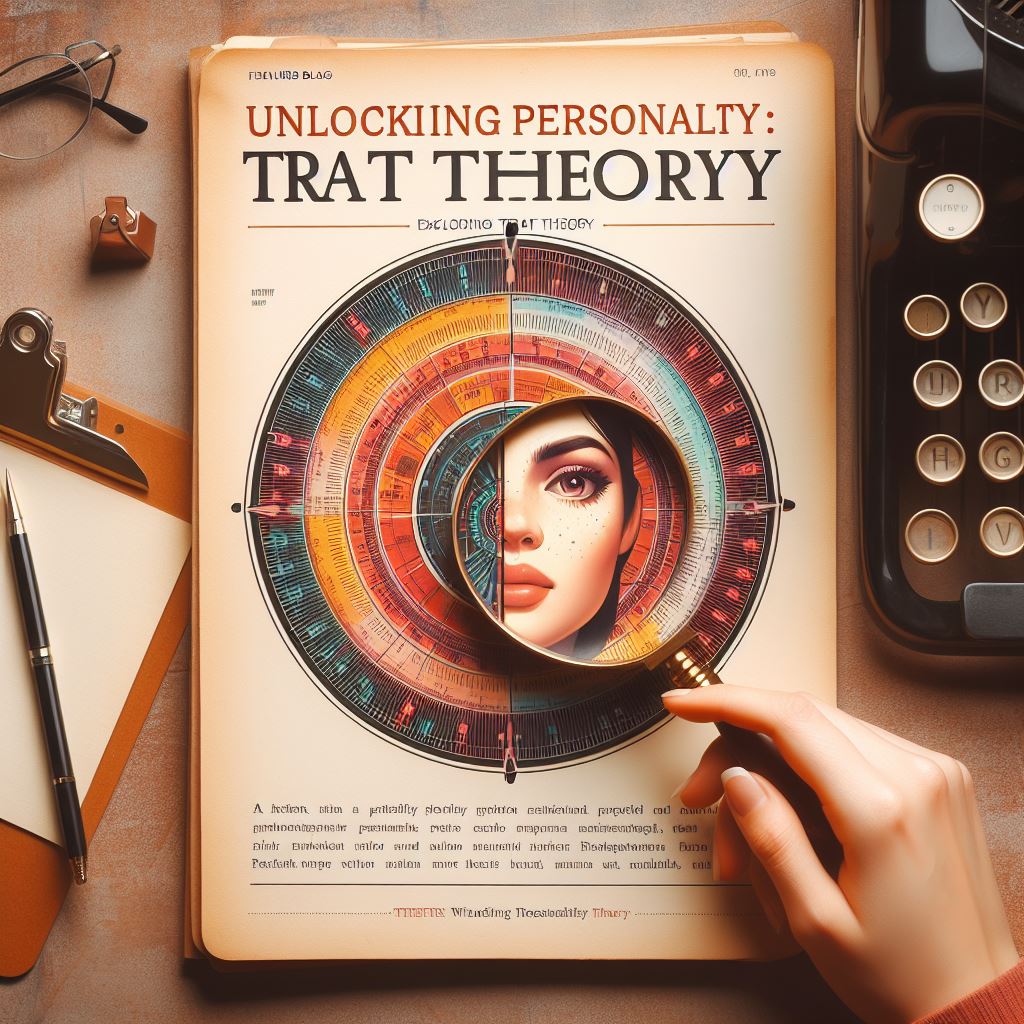Trait theory explores how the personality of an individual is shaped by relatively stable and enduring characteristics called traits. Hence the personality of a person is combination of these traits which have been consistent with the individual over time.
Trait theory explores how the personality of an individual is shaped by relatively stable and enduring characteristics called traits. Hence the personality of a person is combination of these traits which have been consistent with the individual over time. These traits represent consistent patterns of thoughts, feelings, and behaviors exhibited by the individual across different situations. Psychologist Gordon Allport proposed the first trait theory in year 1936. He categorized traits into three levels:
- Cardinal Traits: Rare and dominant traits that define a person to such an extent that their names become synonymous with their personality (e.g., “Machiavellian,” “narcissistic,” “Don Juan”).
- Central Traits: These form the basic foundations of personality and describe major characteristics (e.g., “intelligent,” “honest,” “shy,” “anxious”).
- Secondary Traits: These are related to attitudes or preferences.
Characteristics of Traits
The main characteristics of traits that bundles the theory are as follows:
- Relative Stability: Traits remain relatively consistent over time, although they may be developed and changed slightly throughout life experiences.
- Individual Differences: People differ significantly in the degree to which they possess specific traits. This leads to diverse personalities and behaviors.
- Predictive Power: Understanding an individual's trait profile can provide some certainty in help predicting their behaviors and reactions in certain situations.
Other Trait Theory Frameworks:
Apart from Gordon Allport’s theory other theories have sufficed in the exploration of trait theory, these are:
- Five-Factor Model (OCEAN): This widely used model identifies five broad personality dimensions:
- Openness to Experience: Willingness to embrace new ideas and experiences.
- Conscientiousness: Tendency to be organized, planful, and responsible.
- Extraversion: Level of sociability and outward energy.
- Agreeableness: Disposition to be cooperative and helpful.
- Neuroticism: Susceptibility to anxiety, stress, and negative emotions.
- Cattell’s 16-Factor Model:
- Creator: Developed by psychologist Raymond Cattell.
- Number of Factors: Consists of 16 primary source traits that contribute to an individual’s overall personality.
- Trait Continuum: Each person possesses all 16 traits to varying degrees, with some traits being more pronounced than others.
- Examples of Traits:
- Abstractedness: Imaginative vs. practical.
- Apprehension: Worried vs. confident.
- Dominance: Forceful vs. submissive.
- Emotional stability: Calm vs. high-strung.
- Myers-Briggs Type Indicator (MBTI):
- Creators: Developed by Isabel Myers and her mother Katherine Briggs based on Carl Jung’s theory of personality types.
- Number of Types: Classifies individuals into 16 personality types based on preferences in four dimensions:
- Extraversion (E) vs. Introversion (I)
- Sensing (S) vs. Intuition (N)
- Thinking (T) vs. Feeling (F)
- Judging (J) vs. Perceiving (P).
- Purpose: Helps individuals explore their own personalities, strengths, weaknesses, career preferences, and compatibility with others.
- Not About Dysfunction: Not designed to identify dysfunction or abnormality; its goal is self-awareness.
- Scientific Basis: Developed with scientific rigor, similar to the Five-Factor Model (Big Five) .
- Eysenck’s Three-Dimensional Model: Hans Eysenck proposed three dimensions: extraversion/introversion, neuroticism/stability, and psychoticism.
Trait Theory Criticisms and Considerations:
- Trait Reductionism: Critics argue that solely focusing on traits can oversimplify the complex dynamics of personality which in effect neglects situational influences and individual uniqueness.
- Cultural Bias: Certain trait frameworks may be culturally biased, neglecting traits valued in specific cultures. The culture in which an individual is born in affects who they will grow up to become
- Measurement Challenges: Accurately and reliably measuring individual traits can be complex due to self-reporting limitations and potential social desirability biases.
Despite these limitations, trait theory remains a valuable tool for understanding personality. By studying different traits and their interactions, we gain insights into individual differences, predict behaviour, and develop various applications:
- Personal development: Understanding your own trait profile can help you identify strengths and weaknesses, make career choices, and improve interpersonal relationships.
- Social psychology: Trait research helps understand how personality influences group dynamics, leadership styles, and conflict resolution.
- Clinical psychology: Identifying specific trait patterns can aid in diagnoses, treatment planning, and predicting treatment outcomes.








